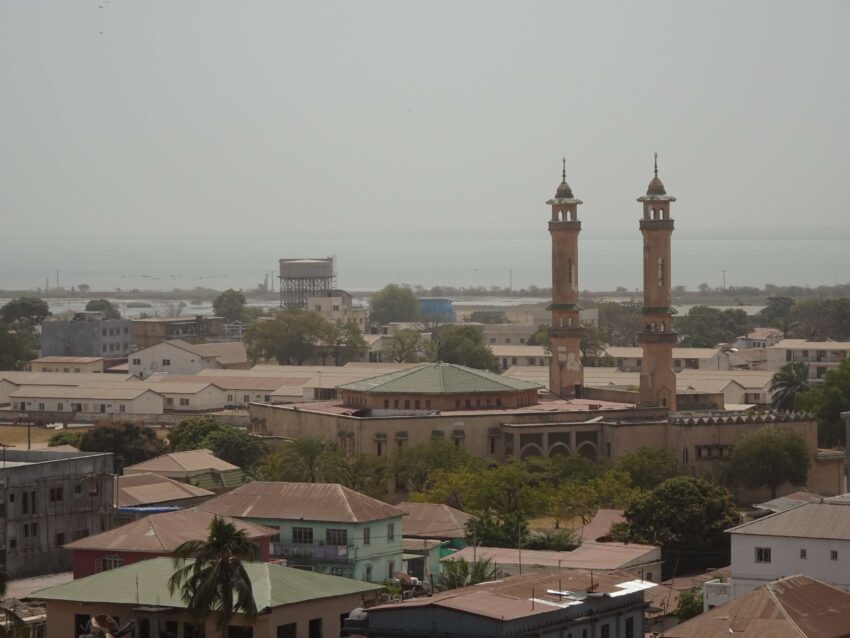Banjul certainly is one of the more unusual capitals I’ve come across. Contrary to many West African cities, it has a laid-back, sleepy vibe and feels a bit fallen out of time. Compared to energetic and chaotic Serekunda, it almost feels like a slightly bigger village.
I guess this is exactly why I enjoyed exploring The Gambia‘s capital so much. There may not be many must-see sights in town, but I just found it fun to walk the streets and see some glimpses of everyday Gambian life that’s very different from the resort areas further west.
Read on for everything you need to know about exploring the historical spots and back alleys of Banjul.
This post may contain affiliate links, and I might earn a small commission at no additional cost to you. For more info, click here.
Guided Tours of Banjul
If you’d like the company of a local guide while exploring the city, there are a few guided tours of Banjul available. Some of them also include other nearby sights, like Kachikally Crocodile Pool. You can see some options below.
A Great Half-Day Itinerary for Banjul
Most people base themselves in the coastal area west of Banjul and visit the city on a day trip from there. True sighs in the city are few and far between and in my opinion, half a day is the perfect amount of time to see everything Banjul has to offer.
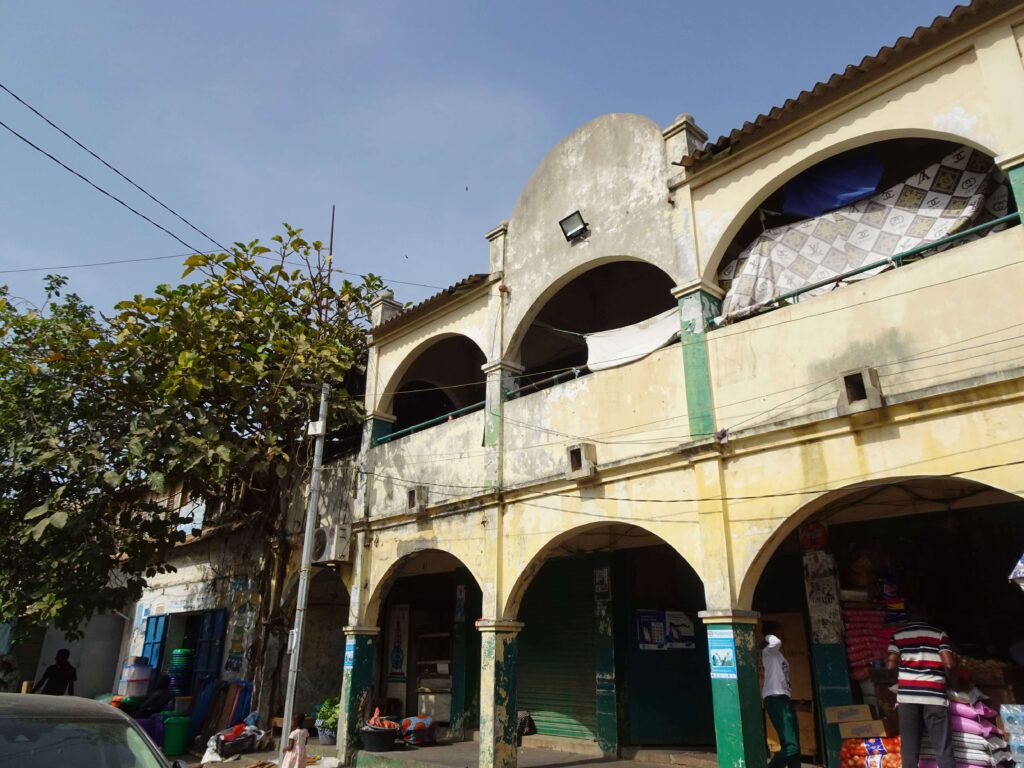
Arch 22 Memorial
Let’s start with the city’s most unusual sight, less because of its appearance (triumphal arches can be found in capitals around the world, after all) and more because of its history. The Arch 22 at the western entrance to Banjul originally was built to commemorate Yahja Jammeh’s 1994 Coup d’état.
Since he has been ousted in 2017 and driven into exile, it’s now meant to serve as a reminder of the atrocities committed under his rule. Inside, there are photographs and stories of people who were subjected to imprisonment and torture under his regime – Something I stumbled across in many places across the country.


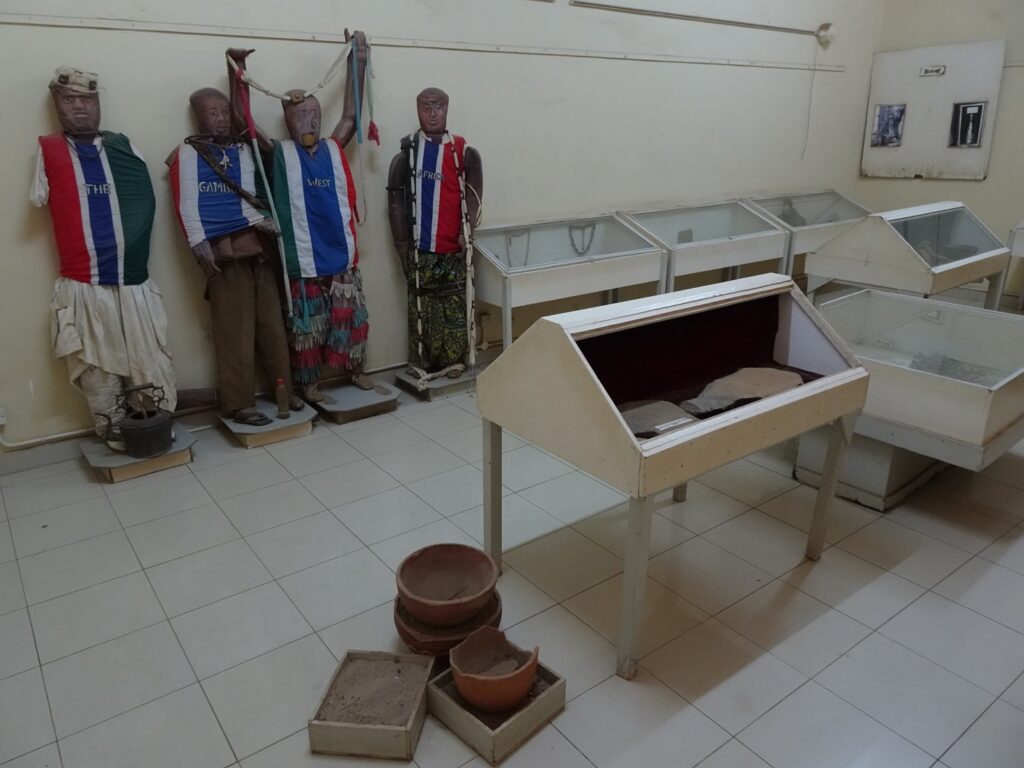
I also walked down a dim stairway in the back of the exhibition and ended up in a small room full of dusty cases with a very incongruous collection of exhibits covering everything from life-sized styrofoam figures to Betty Boop Stamps.
The main reason to visit the arch are the great views from its two upper balconies, from where you can see over the entire city and to the river beyond. The entrance fee is 200 Dalasi and you can buy the ticket in the little booth at the northern foot of the archway.
King Fahad Mosque
The tall minarets you can see from the arch towering over the houses to the south belong to King Fahad Mosque, the city’s biggest religious building. It was built in 1988, albeit in a historistic style resembling much older buildings, and I thought it fit really well into the townscape.

If you clothe modestly and take off your shoes, you can peek inside as a non-muslim, too. There’s no entrance fee.
Pit Stop at Attaya Café
If you walk back to the Arch 22 and follow Independence Drive east, you’ll come across the cute little Attaya Café, which makes for a nice pit stop. I really liked their juices and had both a Wanjo (Hibiscus) and Bouye (Baobab) Juice.
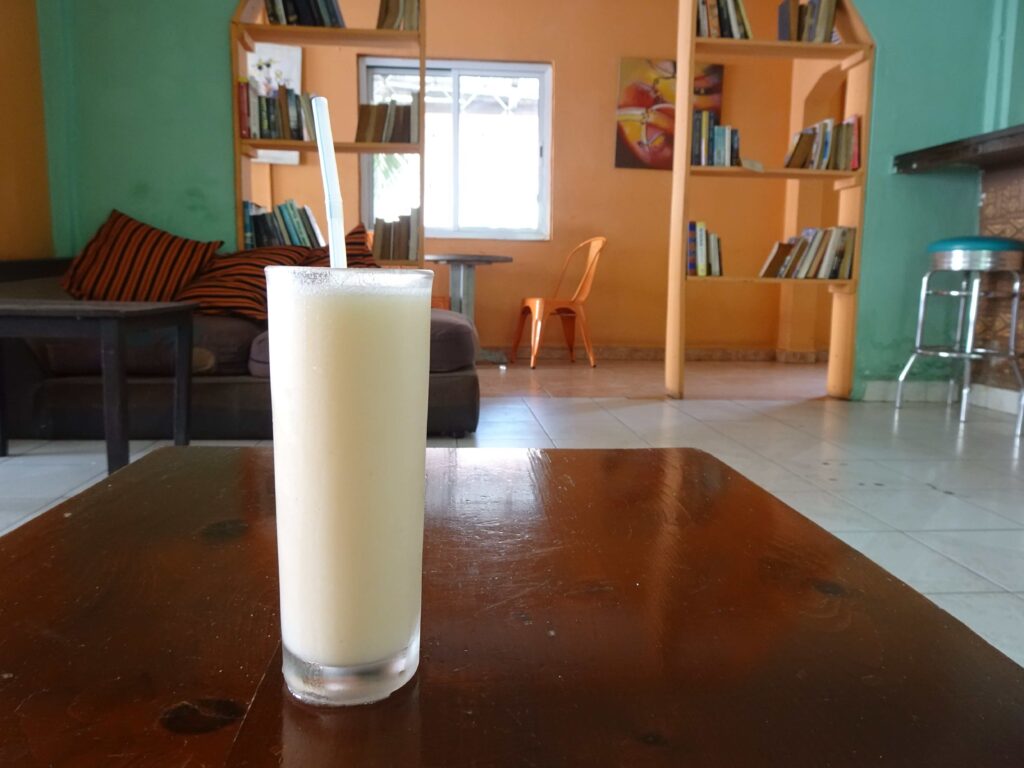
They also have snacks if you want something more substantial before continuing on.
National Museum
The country’s national museum feels a little forgotten, like many places in the city, but although the display cases are dusty and the lighting is far from ideal, I found most of the exhibits really interesting.
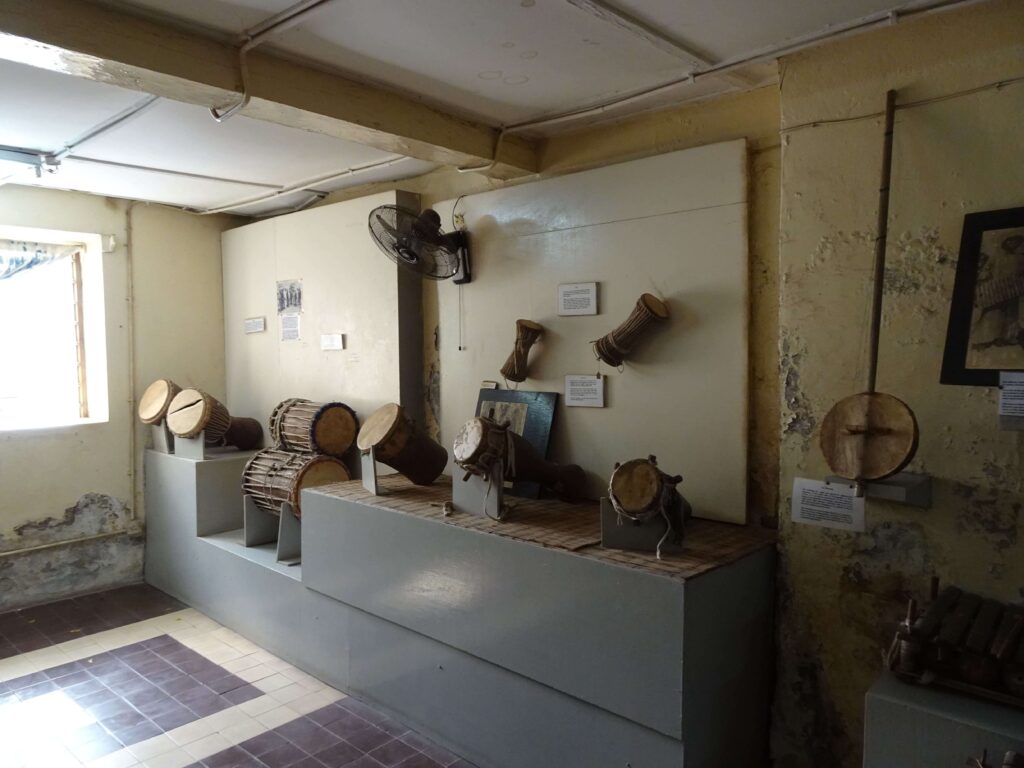
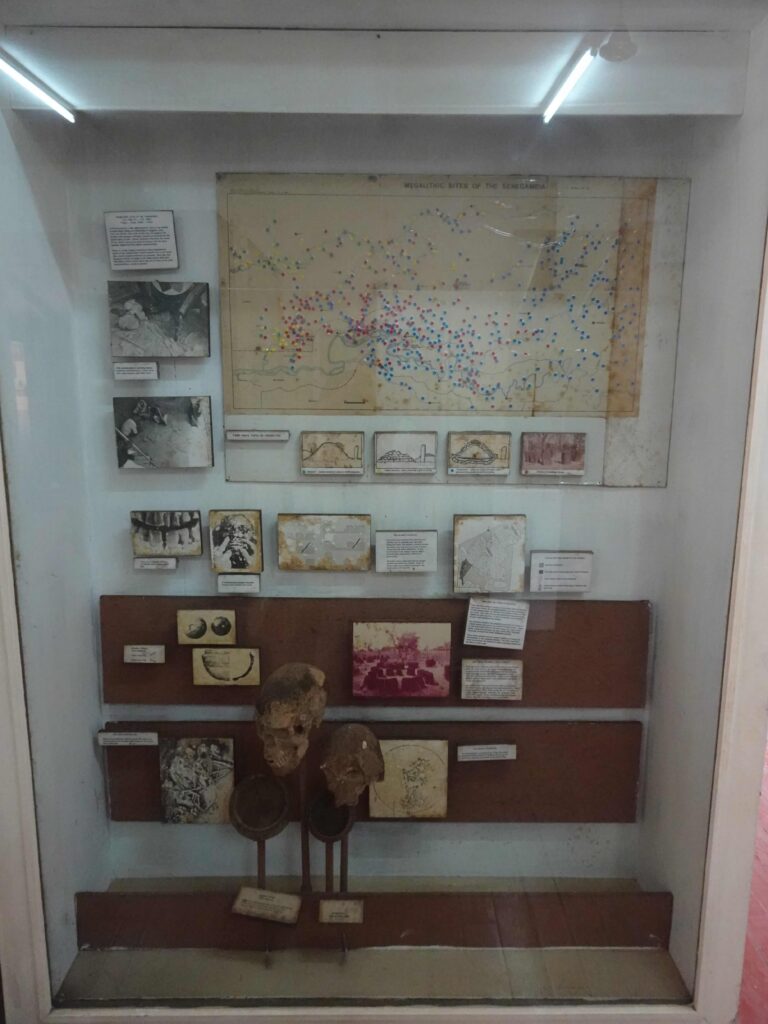

There are sections dedicated to natural history and conservation efforts, to different traditions, festivals and musical instruments and to the post-colonial history of the country. As an archaeologist, it might not be too surprising that I was most interested in the prehistoric sections, though.
There are lots of displays on the megalithic stone circles, which can be found upriver, but also about regional Iron Age Cultures and the Mali Empire. Exploring everything took me a little over an hour. The museum also has a nice little garden with some wacky statues out front. The entrance fee was 200 Dalasi.
St. Mary’s Anglican Cathedral
Further east along Independence Drive sits Banjul’s main Church. The pretty St. Mary’s Cathedral is surrounded by some nice gardens, and inside I especially liked the colourful paintings surrounding the altar alcove as well as the stained-glass windows behind the altar. There’s no entrance fee.
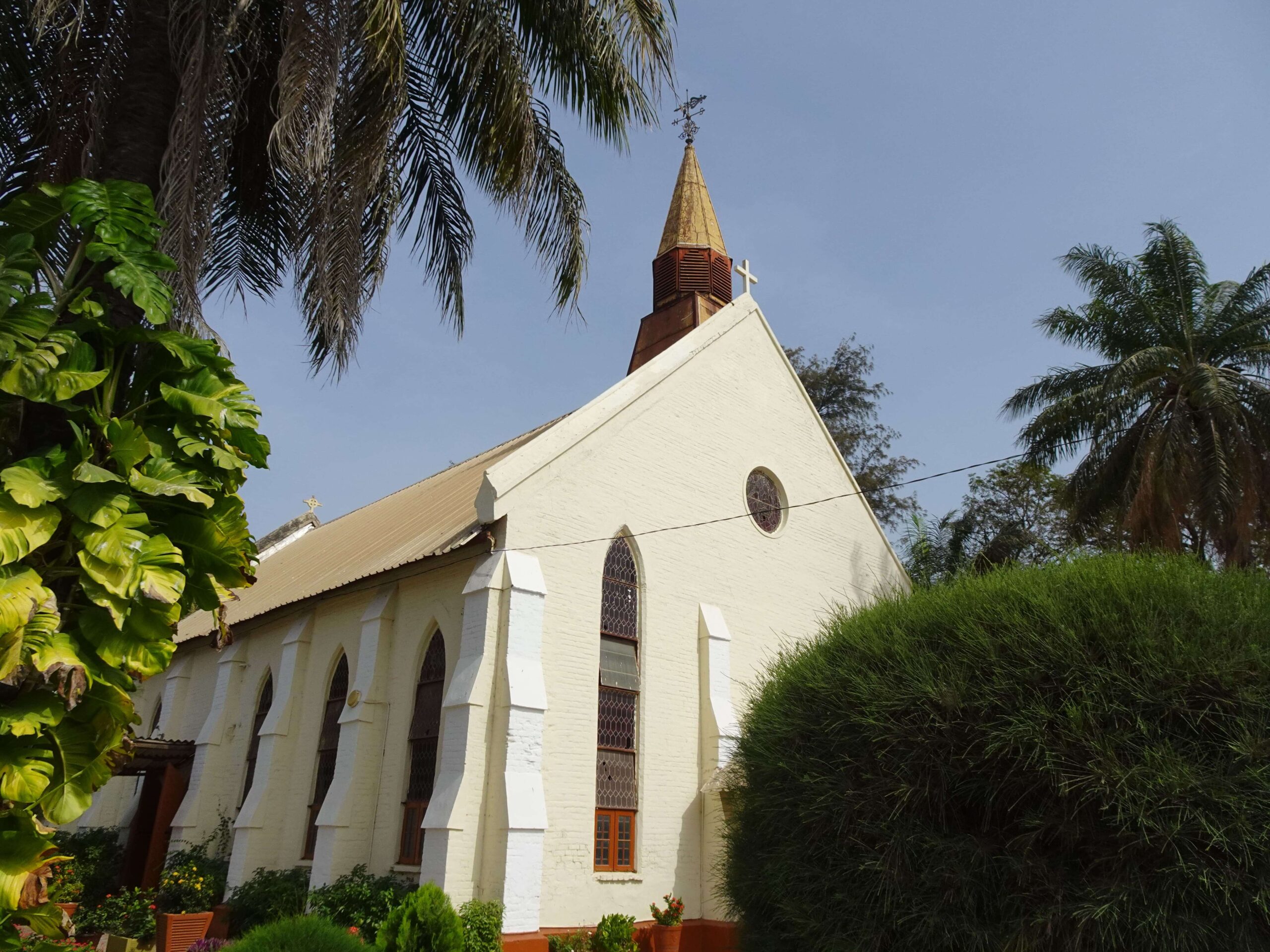
MacCarthy Square
When I was in town, Banjul’s main square was cordoned off as it was being prepared for the Independence Day festivities. To be honest, I’ve seen more attractive squares, but the surrounding buildings were quite interesting, foremost among them the so-called Quadrangle.
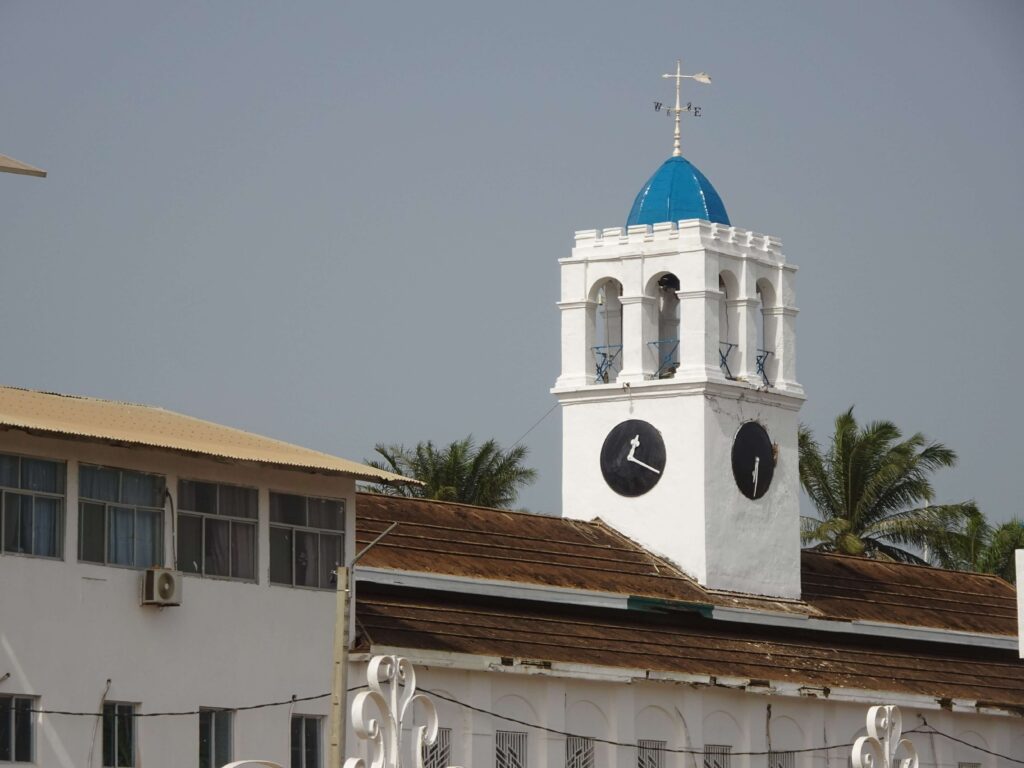
That’s the government building on the West side of the square, with a little blue-and-white-painted clock-tower that displayed wildly divergent times when I was there. The building is said to be the oldest one still in existence in Banjul, dating to about 200 years ago.
Albert Market
If you walk around the Square and up its eastern side, you’ll come to Albert Market, Banjul’s main produce and handicraft market. I found it far less chaotic than the market in Serekunda, but it’s still pretty lively and worth walking through for 15 minutes or so.

Most interesting to me was the way the market is organized into separate sections, that somehow flow seamlessly into each other. At one moment you’re walking through an alleyway of washers where shirts are being ironed and sheets are drying everywhere, and one second later you’re surrounded by blacksmiths hammering around on some piece of metal.
It’s a place that is great to get a sense of local people’s daily lives, but you can also try and get some souvenirs here, which are probably cheaper than in the tourist markets around Kololi (although certainly not as cheap as on Brikama Market further south).
The Residential Quarters
To the west and south of MacCarthy Square, lies the majority of Banjul’s residential quarters. I kind of enjoyed just walking around the alleyways without a real destination, but there are some very minor spots worth checking out in the area.

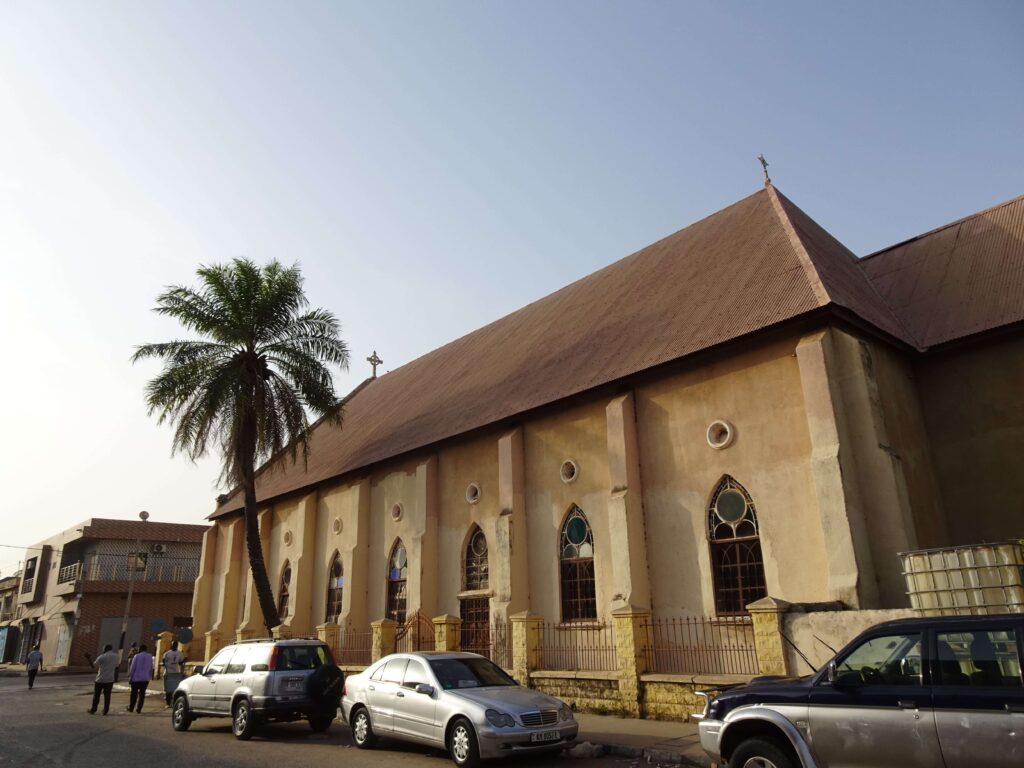

These include a small Methodist church (N 13° 27.109 W 16° 34.554), the bigger Cathedral of Our Lady of Assumption (N 13° 27.066 W 16° 34.468) and a number of surviving historic wooden houses, although these are few-and-far-between. I stumbled on one of them in Stanley Street (N 13° 27.228 W 16° 34.849).
Dinner at Ali Baba
To top off your explorations of Banjul, I recommend finding a restaurant near the Ferry Terminal to try some Gambian food. I followed a recommendation and went to Ali Baba, which serves traditional Yassa and Domoda, as well as Shawarma and other international food, if you prefer that.
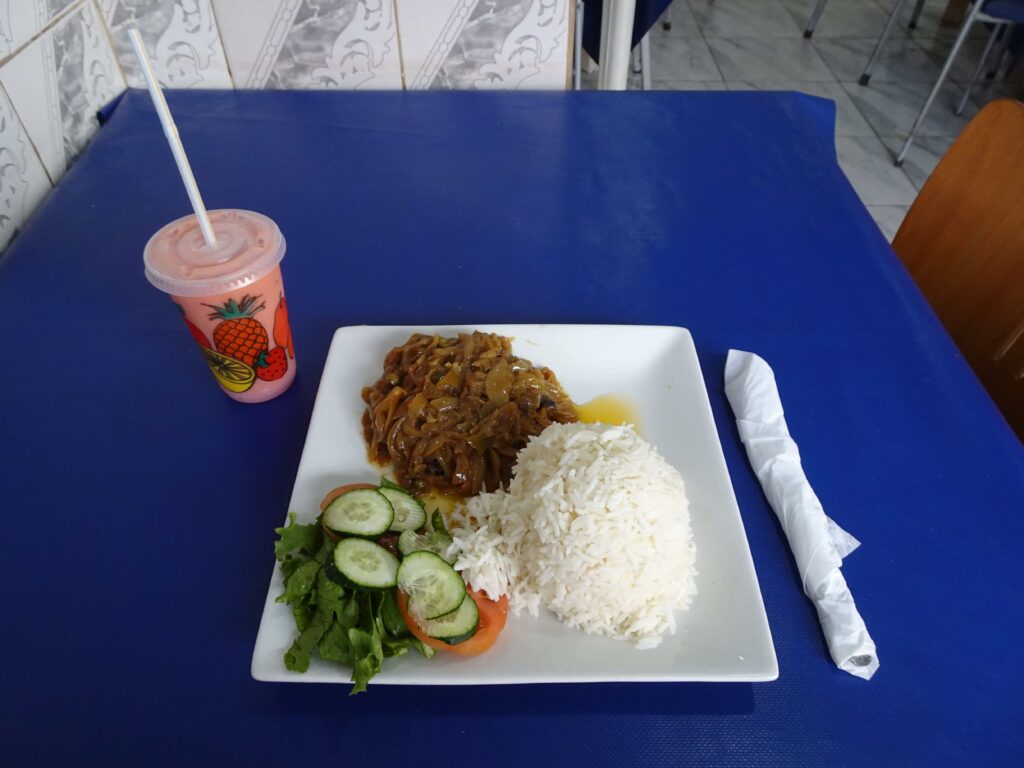
The Beef Yassa I had (marinated in a lemon-and-onion sauce) was really amazing, though, and I can highly recommend it.
Banjul Itinerary Map
All of the stops mentioned above can be found in this map of Banjul.
Practicalities
Where to Stay
Banjul has surprisingly few hotels, most of them being on the cheaper side – like Princess Diana Hotel near Arch 22 or Apollo Hotel near the ferry terminal. The only mid-range option seems to be Assaraya Atlantic Hotel.
In general, I think it’s better to visit Banjul on a day trip. As I laid out, there isn’t too much to see and the isolated location on a peninsula makes for a bad base to explore anything except maybe the sights on the North Bank of the River, which can be reached by ferry from here.
I stayed in Serekunda’s affordable Sarawally Guesthouse and visited from there, but of course the coastal resorts have tons of mid-range and luxury options.

Kotu Hotel Tips
Budget: Boli Boli Guesthouse
Midrange: Kunta Kinteh Beach Complex
Luxury: Tamala Beach Resort (pictured)
.
How to Get to Banjul
If you can’t find direct transport to Banjul from wherever you’re staying, the easiest way is to take a gelly-gelly to Serekunda’s Westfield Junction, at the southern end of Kairaba Avenue, from where tons of bush taxis or gelly-gelly’s run to Banjul during the day (10 Dalasi).
To leave Banjul for Serekunda or the coastal resorts, the best place to go is the corner of Grant Street and Freedom Lane – one block south-west of MacCarthy Square. There are also a couple of tourist taxis waiting there, who’ll be happy to do a ‘town trip’ for you, but this will obviously be more expensive or require some haggling.
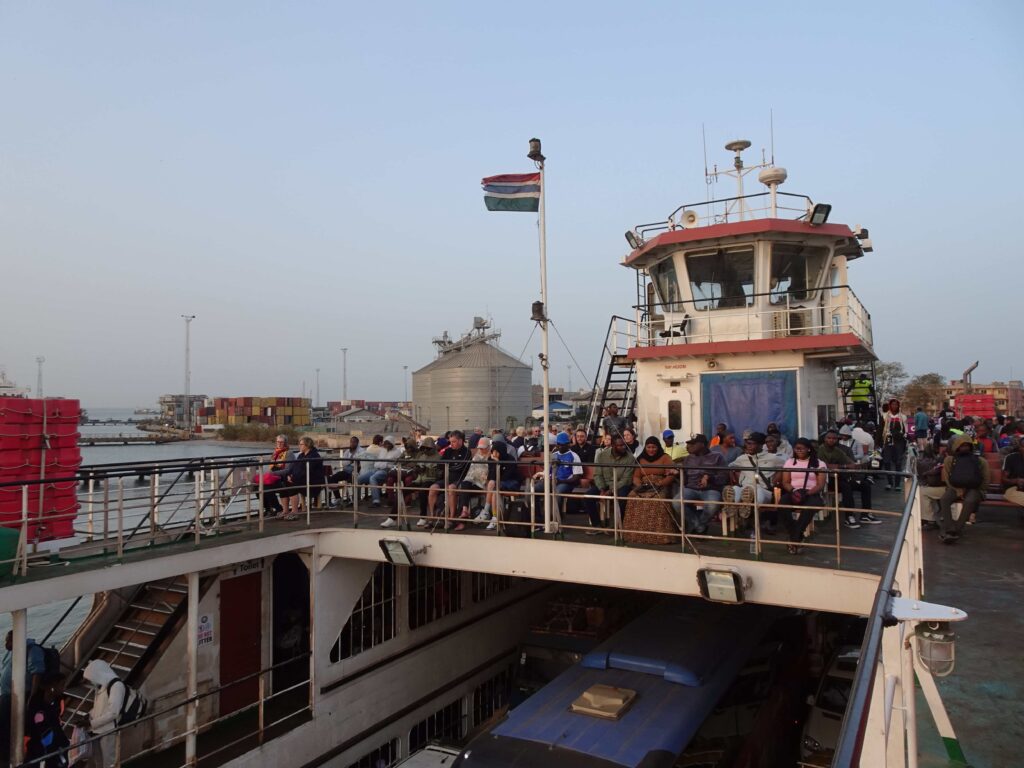
From Barra on the North Bank of the River Mouth, a ferry runs at very irregular intervals during the day. Technically, there’s an App called Gambia Ferries App, but I didn’t get anything approaching a schedule out of it. I ended up just turning up on the full hour and got lucky, as a ferry was just about to leave.
The ferry ticket is 35 Dalasi and the ferry takes a little over half an hour. Keep your ticket until you’ve left the boat, as they want to see it again when you leave.
